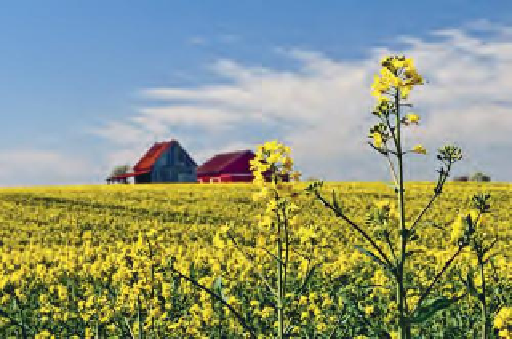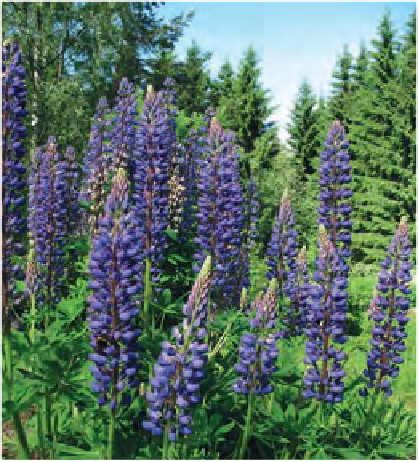Agriculture Reference
In-Depth Information
Pine needles
water, so is difficult to manage on slopes. Birds throw
it around when looking for food underneath, making
adjoining paths untidy.
These are covered with a protective layer that
slows down decomposition. They are low in
calcium and the resins present are converted to
acids. This extremely acid litter is almost resistant
to decomposition. It is valued in propagation, for
growing calcifuge plants such as rhododendrons
and heathers, and as a material for constructing
decorative pathways.
Green manures
This is the practice of growing plants to:
X
cover bare ground
X
compete out weeds
X
reduce soil erosion
X
capture soluble nutrients that would otherwise be
leached
X
add organic matter
X
increase micro-organism activity in the soil
X
develop and maintain soil fertility and structure.
It is mainly used in vegetable plots and in organic
growing systems (see p. 10). The plants used are
typically agricultural crops that cover the ground
quickly and yield a large amount of leaf that can cover
the ground (see Figure 13.5). The seeds are normally
13
Chipped bark
This is mainly used as a mulch either alone on the soil
surface or one of the non-organic sheet mulches such
as woven fibre to make an attractive finish. It is valued
in many situations but there are several characteristics
that need to be noted. Bark is nitrogen deficient so it
does not decompose readily, which means it can last
a long time on the surface. However, once in the soil,
it tends to rob plants of nitrogen (see p. 168). It is light
when dry, so tends to be blown around and floats on
(c)
(a)
Figure 13.5
Plants used
for green manuring:
(a) mustard; (b)
Phacelia
;
(c) clover; (d) lupins
(d)
(b)








